News
Kalubowila HDU: A heartfelt gift from the people to the people
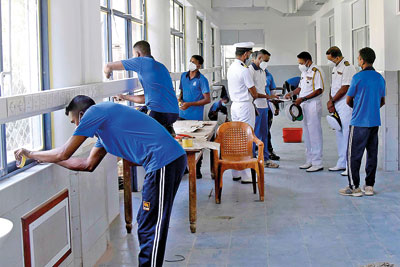
Unstinting support: Navy personnel working from early morn to late night to make the unit a reality. Pix by Akila Jayawardana
The need of humble men and women hit by the rampaging virus was dire and the response has been commendable.
Next week, the Colombo South (Kalubowila) Teaching Hospital which has been going from strength to strength, opens a state-of-the-art, 20-bed High Dependency Unit (HDU) for COVID-19 patients, with an estimated value of Rs. 150 million.
A heartfelt gift from the people to the people, with the healthcare staff going beyond their call of duty to fulfil a critical need!
The HDU ensconced within the main hospital complex is a-bustle with activity, while the other services of this tertiary care hospital continue in these troubled pandemic times.
The Kalubowila Hospital got into the active treatment of COVID-19 patients as the New Year pokura (cluster) from the third wave went higher and higher and ambulances, red lights flashing, drove in frequently.
“One particular day, we had 180 patients,” explains Acting Director Dr. Pradeep Wijesinghe, reliving those tense moments when they were isolating these patients in the medical wards, having shifted the usual patients to other wards.
By late April, they were seeing a flood of COVID-19 positives and had dedicated five of their usual wards, about 230 beds, bringing about many changes in the infrastructure.
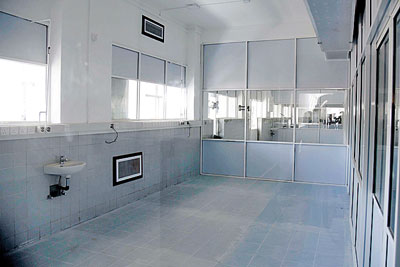
Soon to open: State-of-the-art 20-bed High Dependency Unit for COVID-19 patients
Usually the ‘catchment’ area of the 1,100-bed Kalubowila Hospital managed by around 400 doctors and 800 nurses, is very wide – ranging from Homagama to Padduka, with transfers even coming from Avissawella and in the other direction encompassing Piliyandala to Panadura.
With the staff seeing many COVID-19 patients needing oxygen and close attention, 10 beds had been demarcated as a high dependency section.
It was then in early May that both administrators and clinicians sat down and brainstormed amidst their taxing schedules and decided that they needed an HDU but would not burden the Health Ministry with requests to provide funding.
Getting the blessings of Health Services Director-General Dr. Asela Gunawardena (who was the hospital’s former Director), the clinicians and administrators banded themselves as a ‘Donation Coordinating Committee’. They tapped into their wide network of colleagues, friends and well-wishers both in Sri Lanka and abroad (United States of America, Australia, Canada, United Kingdom, West Asia and more) and also social media, to help make this ‘need’ of the humble people of the country, a ‘reality’.
Slowly and surely, the funds flowed in and Dr. Wijesinghe is quick to point out that the committee did not handle a single cent, they only played the role of ‘matchmaker’.
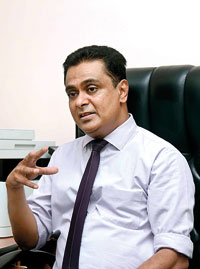
Dr. Pradeep Wijesinghe
Having on hand, a ‘List of Requirements’ of the ‘infrastructure’ and ‘equipment’, the committee systematically matched a donation to the need, asking the donor to deal directly with the agents providing these services.
There is a poignant moment when the Sunday Times is told that two cleaners had put Rs. 2,000 each from their precious savings, while the biggest single donation had been Rs. 10.3 million.
The committee had also been “very moved” when groups they had never imagined, such as schoolchildren who pooled their pocket money, small groups, old boys of schools, clubs, voluntary organizations, big and small, gave donations straight from the heart.
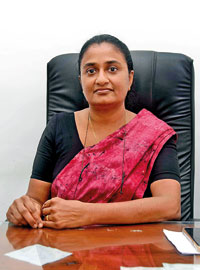
Dr. Upuli Wijemanne
In one voice, the Donation Coordinating Committee waxes eloquent on the unstinting support provided by the Navy, with its personnel seeing it as a labour of love, starting early morn and working late into the night.
On Wednesday, when the Sunday Times visited the hospital numerous Navy personnel were going about hither and thither, some up on ladders or gently telling us not to step into that room as the special floor tiles had just been laid, while the krrrr-sound of cutters filled our ears.
Earlier, the Donation Coordinating Committee had gone around looking for a 4,000-litre oxygen tank, found it in a health institution which did not require it as urgently as the hospital, negotiated with the Health Ministry and brought it here, to occupy the garden adjacent to the HDU.
Less than six weeks after the idea was mooted, the HDU awaits its first patients – to treat, cure and send back home.
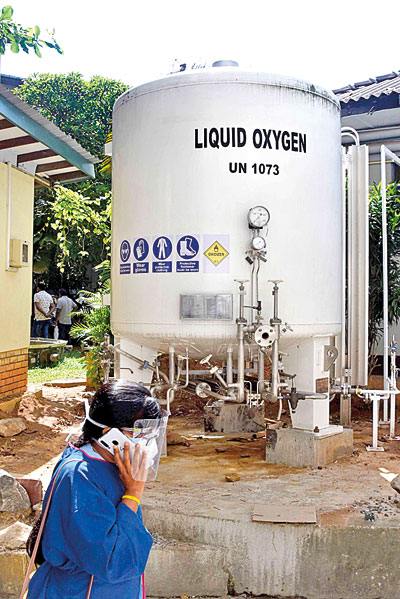
The 4,000-litre oxygen tank occupies the garden adjacent to the HDU
| ‘Help us please’A call goes out from the Donation Coordinating Committee for a little more help from the public. Please call the Director on: 011-2764160 to find out how you may lend a helping hand. | |
| State-of-the-art unit It is Deputy Director Dr. Upuli Wijemanne who details all the facilities that the Kalubowila Hospital’s glass-panelled, fully-fledged HDU will offer beleaguered patients rushed here.
“We have installed pipelines for ventilators so that these beds can be upgraded to those in an Intensive Care Unit (ICU). There is also one bed dedicated for a patient who needs dialysis,” says Dr. Wijemanne, adding that whenever the need for COVID-19 treatment wanes, this HDU can easily be converted into a medical ICU. |

